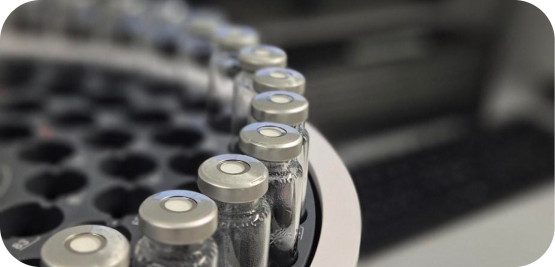(Download: Detecting Residual IPA: Medistri’s New Validated Method in PDF by Medistri)
At Medistri, we continuously expand our laboratory services to help manufacturers demonstrate the safety and compliance of their products. Our latest development is a newly validated method for detecting residual Isopropanol (IPA) — a solvent that plays a central role in cleaning and disinfection processes across the healthcare and pharmaceutical industries.
Why Detect Residual IPA?
IPA (Propan-2-ol) is one of the most widely used solvents due to its effectiveness, volatility, and antimicrobial properties. While it is classified as a low-toxicity solvent (Class 3, USP <467>), strict limits still apply to ensure safe patient exposure.
For medical device and pharmaceutical manufacturers, it is not enough to assume IPA residues will evaporate completely. Regulators expect scientifically validated evidence that residual levels are controlled, well below acceptance limits, and consistently reproducible. Demonstrating compliance provides assurance to patients, regulators, and stakeholders alike.
Our Validated Method
Medistri’s laboratory has developed and validated a method based on Headspace Gas Chromatography with Flame Ionisation Detection (HS-GC-FID). This technique is internationally recognized for its sensitivity and reliability when analyzing volatile solvents.
The method was validated in accordance with ICH Q2(R2) and ISO/IEC 17025, ensuring full traceability and acceptance by regulatory authorities.
Key Method Highlights
- Limit of Quantification (LOQ): 5 µg/ml
- Accuracy: 99.7% at the LOQ
- Detection range: 1–100 µg/ml
- Regulatory alignment: ICH Q2(R2), USP <467>, ISO/IEC 17025
Supporting Your Compliance Strategy
Residual IPA testing integrates seamlessly into Medistri’s broader portfolio of services, including cleaning validation, chemical characterization, and material safety testing. By partnering with us, manufacturers gain:
- Validated, regulatory-aligned methods accepted by notified bodies worldwide
- Reliable and reproducible results, enabling confident risk assessments
- Fast turnaround times, helping projects stay on schedule
Whether you are preparing a regulatory submission, validating a new process, or conducting routine quality control, Medistri’s expertise provides the scientific foundation your compliance strategy requires.
Partner with Medistri
With increasing global scrutiny on cleanliness, residual solvents, and material safety, validated methods such as this one are essential to ensuring patient protection and product success.
Contact us at contact@medistri.com to learn more about our new IPA testing method and how it can support your products throughout their lifecycle.
1. What is residual IPA in medical and pharmaceutical products?
Residual IPA refers to trace amounts of isopropanol that remain on a product after cleaning or disinfection. Even though IPA is volatile, not all of it may fully evaporate, and measuring the remaining levels ensures compliance with safety regulations.
2. Why is it important to test for residual IPA?
Testing is essential because regulatory authorities require evidence that IPA residues are consistently below accepted safety limits. This protects patients from unnecessary exposure and demonstrates that manufacturers maintain proper control of their processes.
3. How is residual IPA typically detected in laboratory testing?
Residual IPA is commonly detected using analytical techniques such as Headspace Gas Chromatography with Flame Ionisation Detection (HS-GC-FID). This method is highly sensitive, able to detect very small quantities of volatile solvents, and is internationally recognized for its accuracy.
4. When should manufacturers include residual IPA testing in their processes?
Manufacturers should conduct this testing during cleaning validation, process validation, and routine quality control. It is particularly important when submitting data for regulatory approval or when introducing a new cleaning or disinfection process.
5. How does Medistri support manufacturers with residual IPA compliance?
Medistri provides a validated HS-GC-FID method aligned with international standards such as ICH Q2(R2) and USP <467>. By integrating this service into compliance strategies, Medistri helps manufacturers generate reliable, reproducible data that regulatory authorities and notified bodies readily accept.
